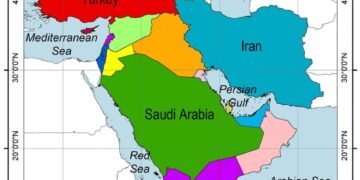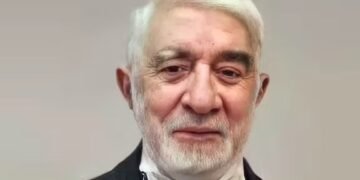DEIR AL-BALAH, Gaza Strip — Three hostages held in Gaza were released to Israeli forces on Sunday, marking a significant moment in the fragile ceasefire agreement between Israel and Hamas. The Israeli military confirmed their safe transfer shortly after the truce took effect.
Israeli media aired live footage from Al Jazeera showing the hostages being escorted to Red Cross vehicles in Gaza City. The convoy, surrounded by a crowd of thousands, was protected by armed men wearing green Hamas headbands.
In Tel Aviv, large crowds gathered in a central square erupted in cheers as they watched the release unfold on big screens. The square had been a focal point for months of public demonstrations calling for a ceasefire.
A Fragile Agreement
The ceasefire, which began at 11:15 a.m. local time, is a critical first step toward ending a devastating 15-month conflict. The deal includes an initial six-week truce, with the aim of securing the release of dozens more hostages and facilitating the exchange of Palestinian prisoners. However, a last-minute delay by Hamas underscored the fragility of the arrangement.
Earlier on Sunday, Israeli officials confirmed the names of the three hostages released: Romi Gonen, 24, abducted from the Nova music festival; Emily Damari, 28, an Israeli-British dual citizen; and Doron Steinbrecher, 31, taken from Kibbutz Kfar Aza. In exchange, 90 Palestinian prisoners were scheduled for release.
Continuing Violence and Political Tensions
Despite the ceasefire, violence persisted as Israeli fire reportedly killed 26 people in Gaza just hours before the truce began. Gaza’s Health Ministry has not clarified whether the casualties were civilians or fighters. The Israeli military urged civilians to keep their distance as troops retreated to a designated buffer zone within Gaza.
Domestically, Israeli politics were shaken as National Security Minister Itamar Ben-Gvir announced his party’s withdrawal from the government in protest of the ceasefire. Although his departure weakens Prime Minister Benjamin Netanyahu’s coalition, it does not jeopardize the truce.
Rebuilding and Next Steps
The war has left Gaza in ruins, with entire neighborhoods destroyed, infrastructure crippled, and tens of thousands dead. Residents in cities like Rafah have begun returning home, only to find devastation, including human remains in the rubble. “It’s like a scene from a Hollywood horror movie,” one resident said.
The truce agreement, mediated by the United States, Qatar, and Egypt, has raised hopes for long-term peace. It also allows for increased humanitarian aid, with hundreds of trucks expected to cross into Gaza daily. However, significant challenges remain, including the return of all hostages, reconstruction efforts, and the potential resumption of conflict.
Divided Reactions
While some Israelis celebrated the hostages’ release, others expressed skepticism. Critics of the deal, including residents near Gaza, fear it merely postpones future conflict. Meanwhile, Palestinians across Gaza celebrated the brief respite, though the scars of war remain fresh.
This ceasefire marks only the second major pause in hostilities since the war began, offering a glimmer of hope for a region yearning for peace. Negotiations for the next phase of the agreement, which will likely determine the long-term stability of the ceasefire, are set to begin in the coming weeks.

 English
English






































